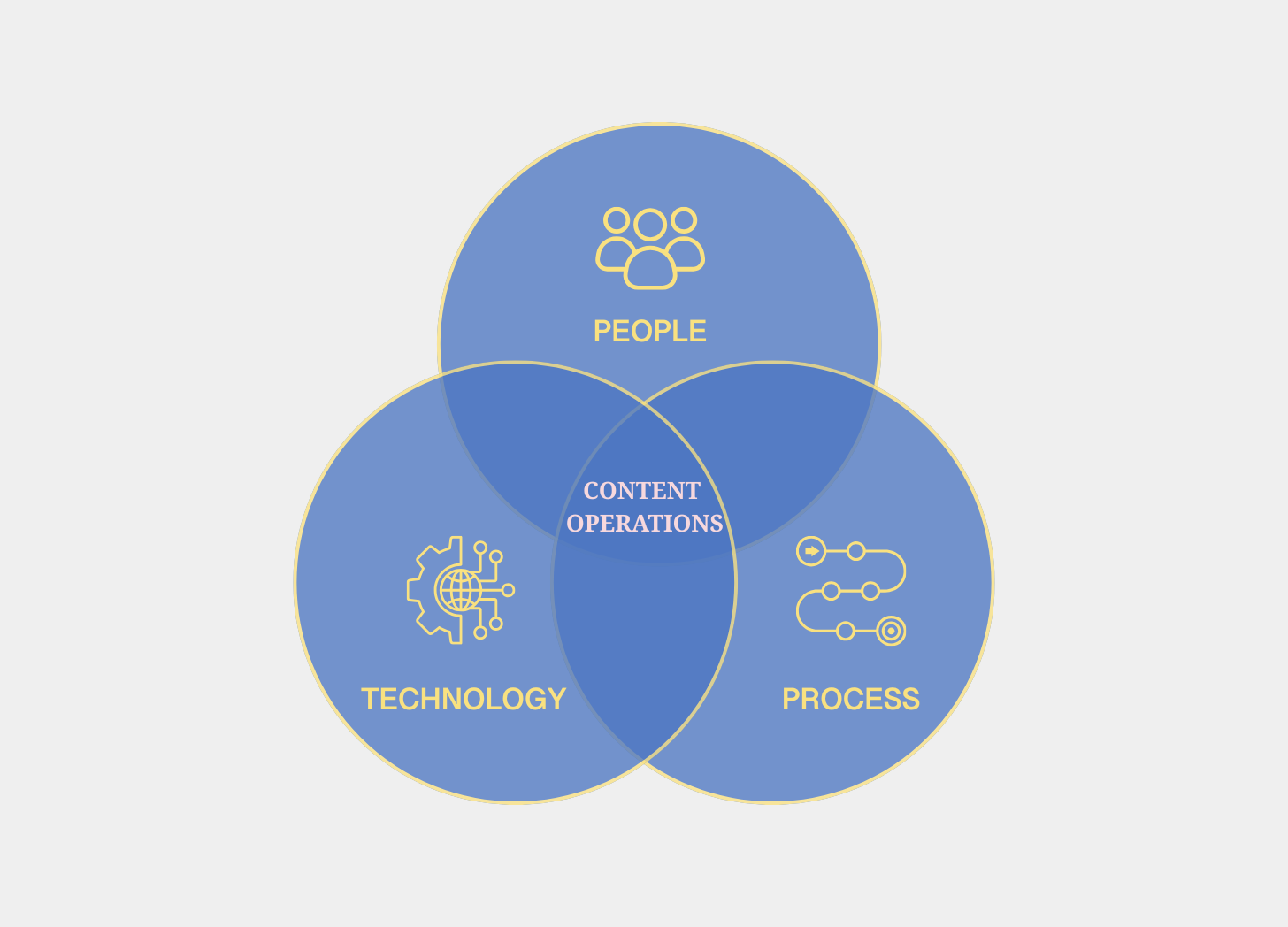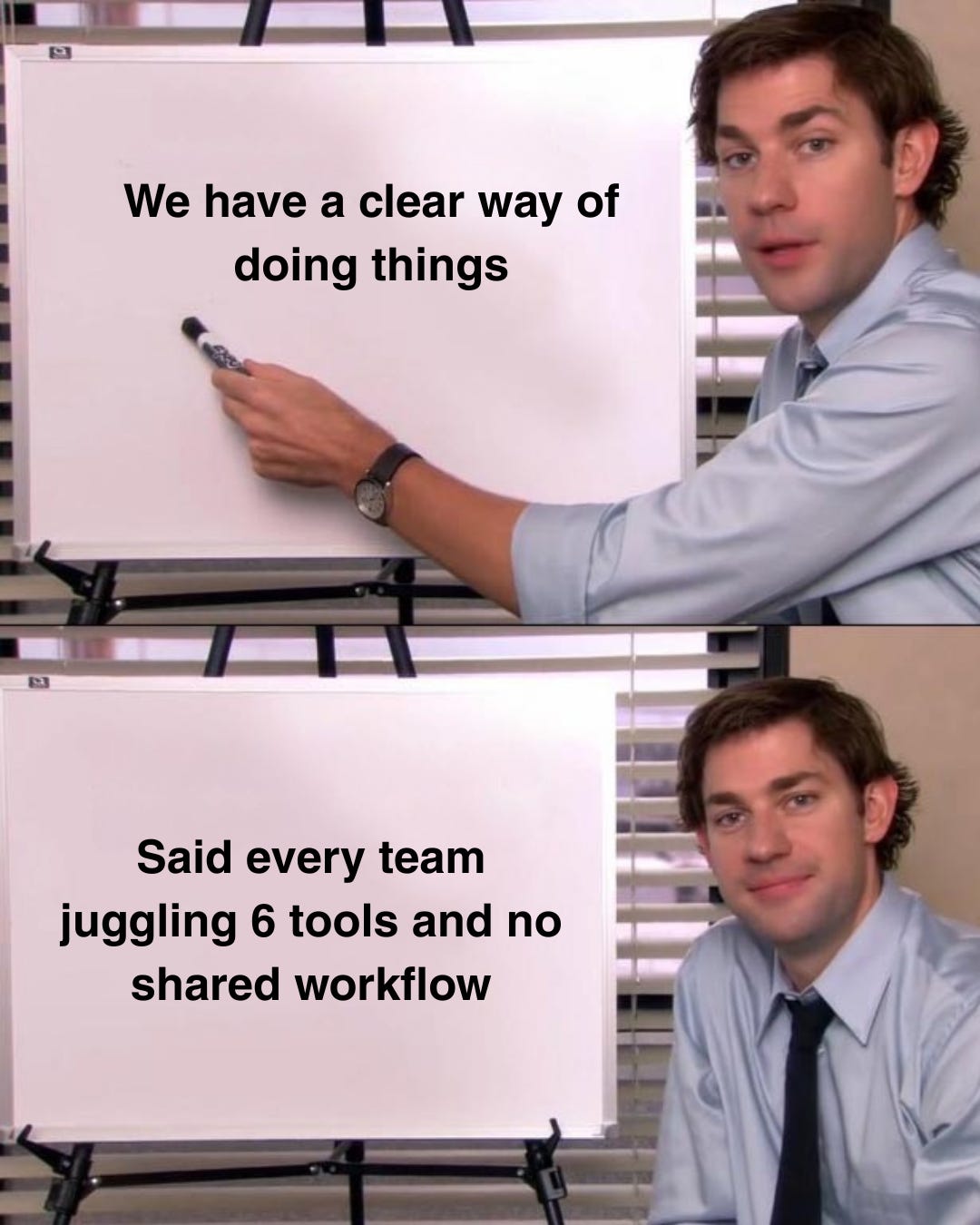The Hidden Engine of Content Success: Demystifying Content Operations (Part 1)
Unpacking the processes, people, and purpose behind great content.
Every day, brands churn out more posts, more videos, more assets. Yet, few pause to ask: Is this working? Are we efficient? Are we aligned? In the era of generative AI and content overload, the real impact comes from how well content is planned, managed, and connected across the business.
That’s where Content Operations comes in: the unsung hero behind the scenes. Done well, it’s the difference between chaos and clarity, silos and synergy, noise and impact.
This series unpacks what Content Operations really is, why it’s essential in today’s marketing landscape, and how to build a future-proof system that supports both creativity and consistency. In Part 1, we set the foundation. In upcoming pieces, we dive into audits, workflows, and (Gen)AI integration.

What Are Content Operations, Really?
A content operation is not just a function, it’s the infrastructure that supports every content effort in your business.
It’s the people, processes, and technology that enable teams to plan, produce, distribute, and optimise content efficiently, strategically, and at scale.
When done right, it ensures:
Teams aren’t duplicating efforts.
Content is created with purpose.
Tools work together, not against each other.
Quality, speed, and impact are not trade-offs.
Think of it as the connective tissue that brings your content strategy to life.
Why Content Chaos Is the Norm
With media proliferation and the algorithmic demand for “more,” most teams are caught in a race to scale, churning out assets to fill what Tom Roach & Grace Kite calls the “worlds of little,” where fragmented, fleeting content dominates but rarely delivers lasting value. But volume alone doesn’t solve:
Misaligned messaging across channels
Slow approvals and last-minute edits
Too many cooks in the kitchen
Lack of clarity around what “good content” even looks like
Despite 52% of marketers saying they’re creating content faster than ever, 64% struggle to maintain quality standards as they scale. And while teams now manage 28% more content assets annually (with an average of 15.7 assets produced weekly), the output often lacks cohesion or purpose.
The result? A lot of teams are operating like this:
I’ve seen this firsthand. Without clear operations, content becomes a guessing game where whoever shouts loudest gets the biggest budget. What’s often missing isn’t creativity, it’s coordination.
As Robert Rose brilliantly puts it:
“Businesses will win with content marketing when they can constantly reconfigure their activities and manage portfolios of content-driven experiences.”
The Pillars of Content Ops: People, Process, Technology
These three elements must work in harmony:
People: Do team members know their role in the content lifecycle? Are they empowered to collaborate or stuck chasing approvals?
Process: Are there clear, documented workflows from brief to publish, or are you reinventing the wheel every time?
Technology: Are your tools integrated and actually supporting the work or are they just adding friction?
Currently, 73% of teams report workflow fragmentation across 6+ tools, and 41% of creative time is spent on non-creative tasks like approvals and revisions.
You can’t fix what you can’t see. And most inefficiencies are invisible until they become urgent, missed deadlines, bloated costs, duplicated work, or underwhelming performance.
Content Teams Often Obsess Over Trends
The latest TikTok challenge, a viral post, a new platform update; these often drive short-term decisions. But before reacting, pause and ask:
Does this fit our content vision?
Does it serve our audience or just the algorithm?
Your content ops should act as a filter. A system that allows creativity to flow but not at the cost of purpose or clarity.
Purpose vs. Mission: Your North Star
Before fixing tools or processes, start with two essential questions:
What is your content purpose?
Why does your content team exist? What is the guiding reason behind every brief, asset, or video? Think of it as the guiding star for all content efforts.
What is your content mission?
Who are you speaking to? What kind of impact are you trying to create awareness, trust, recruitment, brand advocacy or sales?
Having a clear purpose and mission unifies teams. It reduces second-guessing and makes decisions faster. Especially when only 29% of marketers can directly tie content efforts to revenue, while 38% of teams are being asked to prove ROI.
Your Team Needs a Vision, Not Just a To-Do List
Whether you’re a CMO or a content lead, your title matters less than the vision you cast.
Content isn’t about vanity metrics anymore, it’s about brand growth, customer retention, or sales pipeline. Too many senior marketers have risen through the ranks without learning how to read a boardroom, or how to speak the language of executive teams.
If your team is stuck in reactive mode, chasing algorithms and firefighting briefs, it’s time to zoom out. Reassess not just what you make, but how you make it.
That’s the soul of Content Operations.
Coming Up in Part 2
In Part 2, we’ll get practical:
How to run a content audit that uncovers gaps, overlaps, and bottlenecks
How to map your workflows and processes (with real examples)
Hit subscribe to get Part 2 directly in your inbox, or share this with a teammate buried in briefs.
Until then — start asking not just what content are we making? but how are we making it better?






Great write up